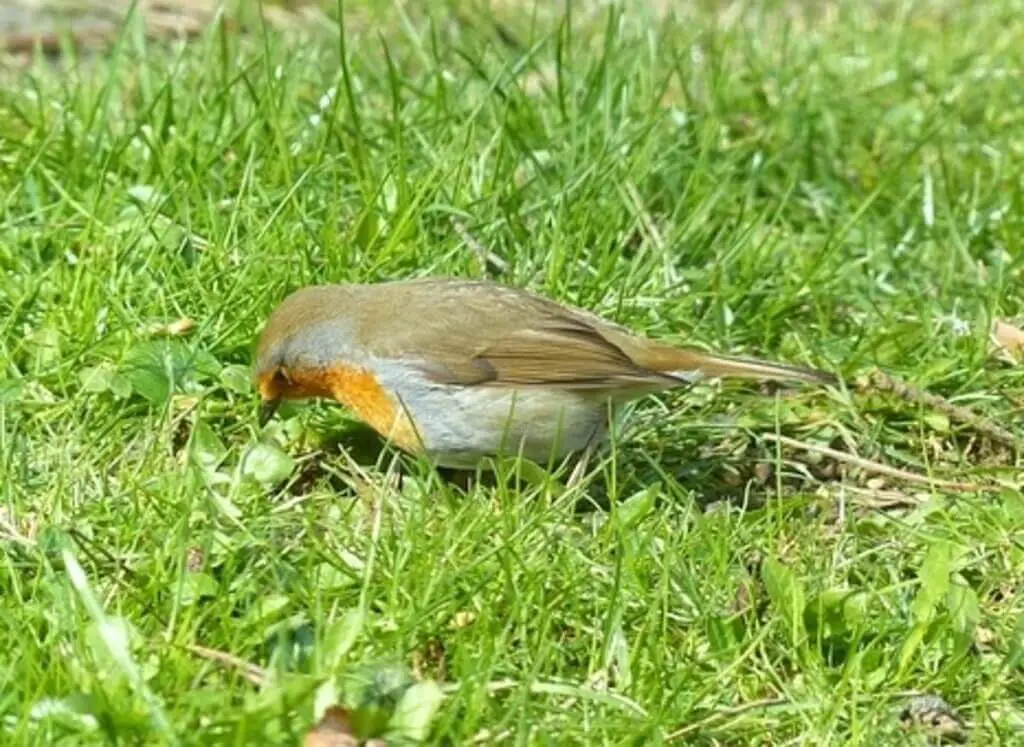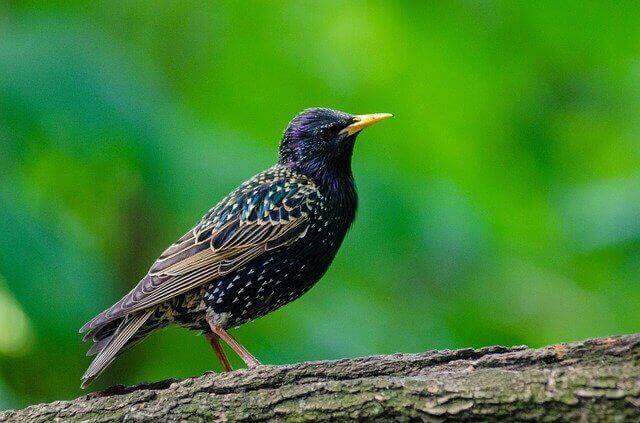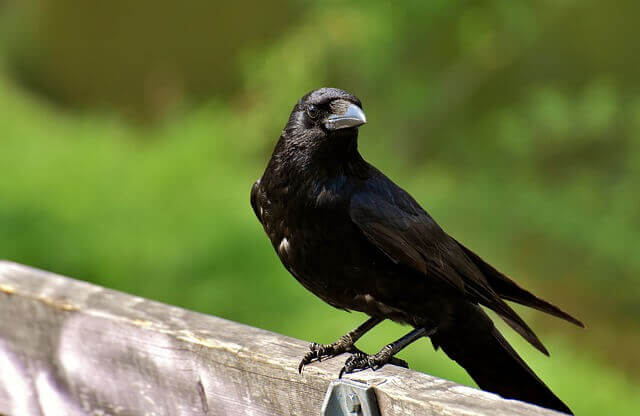Welcome to the fascinating world of avian insectivores with discerning tastes. In this exploration, we’ll journey through the remarkable diversity of bird species that have developed a penchant for dining on ants. From woodpeckers to warblers, we’ll delve into the captivating strategies and adaptations that birds employ to seek out and savor ants.
As we uncover their intriguing dining habits and ecological significance, you’ll gain a deeper appreciation for the integral role these birds play in maintaining the balance of nature. So, fasten your seatbelts and join us on a captivating journey into the world of “18 Birds That Eat Ants.”
Table of Contents
- 1 Why Do Birds Eat Ants?
- 2 Common Types of Birds That Eat Ants
- 2.1 House Wren
- 2.2 Carolina Wren
- 2.3 Cedar Waxwing
- 2.4 Downy Woodpecker
- 2.5 Pileated Woodpecker
- 2.6 European Green Woodpecker
- 2.7 Northern Flicker
- 2.8 European Starling
- 2.9 Gray Catbird
- 2.10 American Crow
- 2.11 Common Raven
- 2.12 Song Sparrow
- 2.13 American Robin
- 2.14 Northern Cardinal
- 2.15 White-breasted Nuthatch
- 2.16 Red-breasted Nuthatch
- 2.17 Black-capped Chickadee
- 2.18 Eastern Bluebird
- 3 What Types of Ants do Birds Eat?
- 4 How Do Birds Catch Ants?
- 5 Are Ants Harmful to Birds?
- 6 Do Ants Eat Dead Birds?
- 7 What Ant Killer is Safe for Birds?
- 8 Do Baby Birds Eat Ants?
- 9 Do Chickens Eat Ants?
- 10 Do House Sparrows Eat Ants?
- 11 Do Chickadees Eat Ants
- 12 What Birds Eat Fire Ants?
- 13 Do Black Birds Eat Ants?
- 14 Do Blue Jays Eat Ants?
- 15 Do Robins Eat Ants?
- 16 How to Attract Ant-Eating Birds?
- 17 Author
Why Do Birds Eat Ants?
Birds are drawn to ants not only for their protein content but also for the valuable nutrients they provide, including zinc, iron, and potassium. These elements play a significant role in maintaining a bird’s overall health, aiding in processes such as oxygen circulation and heartbeat regulation.
This makes ants a natural and nutritious choice in a bird’s diet, particularly during critical life stages like breeding and migration, where energy and nutrient intake are paramount for their well-being.
Common Types of Birds That Eat Ants
House Wren
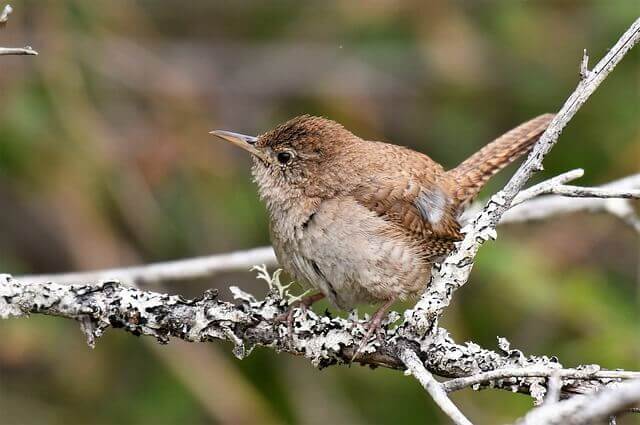
House Wrens are small, brown songbirds that live in North America. They can be found all over the United States and Canada. Ants make up a large part of their diet during summer months. House wrens also will consume spiders, beetles, crickets and other insects in addition to occasional small vertebrates like earthworms or salamanders.
Carolina Wren
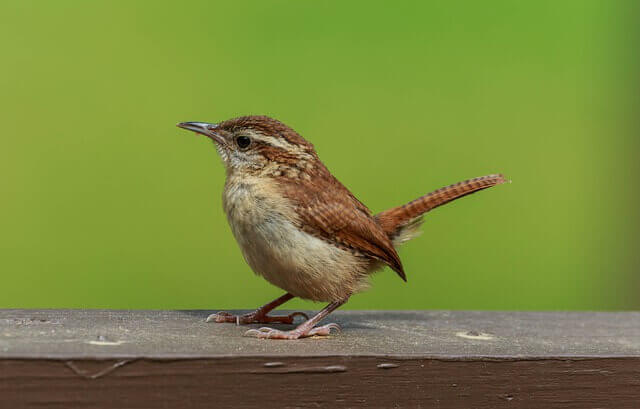
The Carolina Wren is a small songbird that resides in the eastern United States. They are very opportunistic feeders that eat insects, berries, eggs of other bird species, seeds from weed flowers or trees. One of the most popular foods for these birds to eat is ants. Ants make a great meal for Carolina wren birds because they can find them anywhere.
Cedar Waxwing
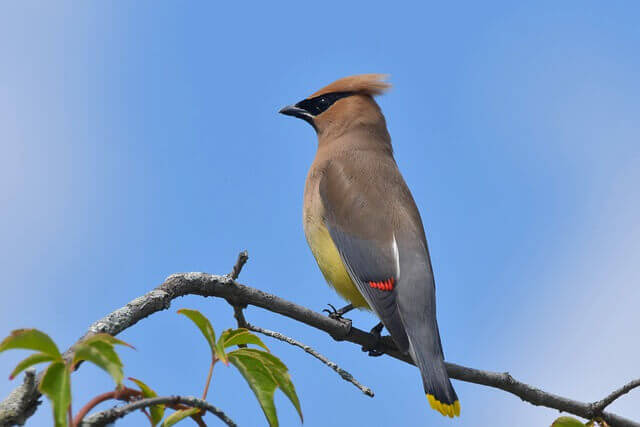
Cedar Waxwings are a type of bird that live throughout North America, Mexico, Central America, and the Caribbean. They can be found in gardens, orchards and fields. They are omnivores, meaning they eat both plants and animals. These birds mainly eat insects such as ants and fruit during the summer months, but they also have been known to feed on berries, grapes, juniper berries, rose hips, and tree sap.
Downy Woodpecker
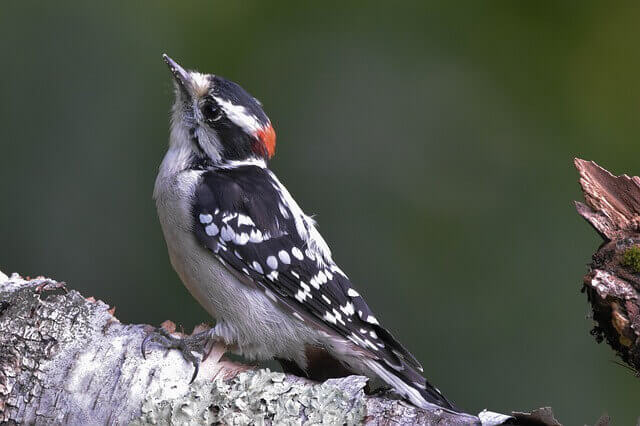
The Downy Woodpecker is a common omnivorous bird in North America. The diet of the woodpecker includes beetle larvae, chiseled out of tree bark and insects such as ants, arthropods, fruits, seeds, and sap. The woodpecker has an adaptation called “chisel-bill” which is unique to this type of bird. This bill allows it to probe into small holes in trees where the larvae live and eat them for their food source.
Pileated Woodpecker

The Pileated Woodpecker is a large North American bird that lives in deciduous and mixed forests across the continent. Their diet consists of mainly carpenter ants, supplemented by other insects such as beetles and wasps. They also eat some plant material such as seeds and berries. Pileated woodpeckers have strong bills for pecking into trees to find their prey, as well as long tongues for extracting it from deep crevices in tree bark.
European Green Woodpecker
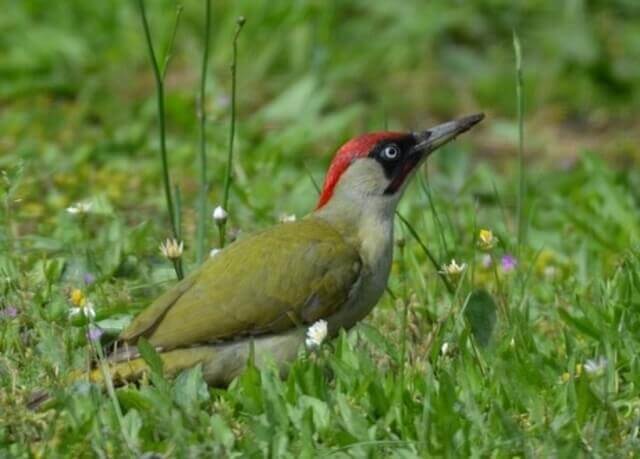
The European Green Woodpecker is one of the most common birds in Europe. They are often seen foraging on tree trunks and pecking at bark, usually for ants. It was discovered that more than 60% of their diet consisted of ants, with an average consumption rate around 1 ant per minute. The rest of their diet consists mostly of other insects like flies and spiders, as well as berries and seeds when they can find them.
Northern Flicker

The Northern Flicker is a species of bird that inhabits the Western United States. It ranges from California to Montana and into Canada. They are found in many habitats, but mainly live in forested areas or on agricultural land. The flickers are most commonly seen searching for food along forest edges or walking on the ground near fallen trees. These birds are insectivores that feed mainly on ants, termites, beetles, spiders and other invertebrates.
European Starling
The European Starling otherwise known as the Common Starling, scientifically known as Sturnus vulgaris, is a medium-sized passerine bird belonging to the Sturnidae family. Native to Europe and Asia, this species has also been introduced to North America. Common Starlings have a diverse diet, encompassing various insects, including ants, beetles, crickets, and earthworms, among other prey items.
Gray Catbird
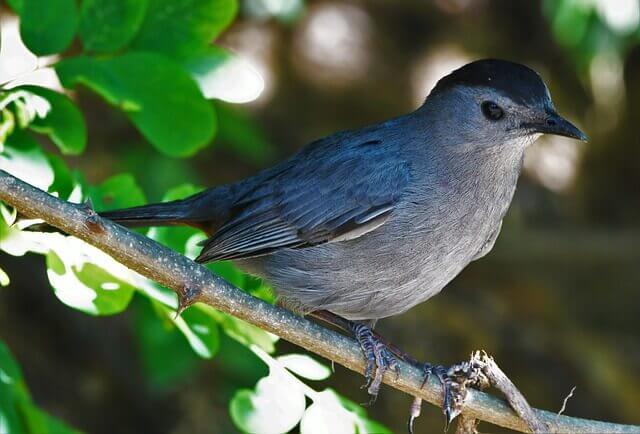
Gray Catbirds, a common songbird in North America, can be seen and heard at backyard bird feeders. They will usually eat many types of seeds and nuts that people offer them, but they also have been known to indulge in insects such as ants during the summer months. The gray catbird is not picky when it comes to what he eats — from small insects like ants to fruits and berries — this gray-feathered bird eats anything!
American Crow
Crows are one of the most common birds in North America. Crows eat a variety of foods, including insects such as ants. In some areas, crows have been observed eating small animals such as rodents and frogs. In order to find food for themselves and their families, crows will scavenge on any animal carcasses they can find. When no food is available nearby, they will even steal from other animals or humans!
Common Raven
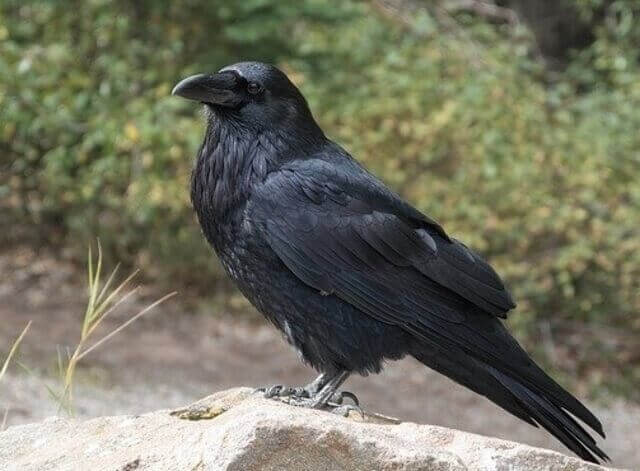
Common Ravens are intelligent birds that live in many parts of the world. The diet of these birds includes various insects, including ants such as the leaf cutter and the fire ant. They consume ant larvae and pupae when they are still alive, but also eat dead ants after their soft tissues have decomposed. Ants provide a high-energy meal for ravens because they can be found in abundance in most environments with plants or trees where the Common Raven lives.
Song Sparrow
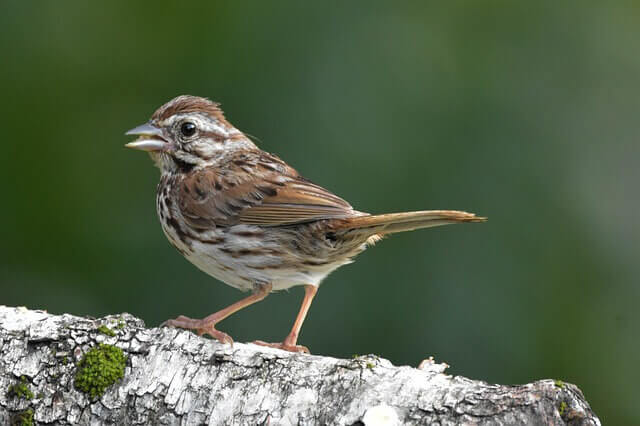
Song Sparrows are one of the most common birds in North America. They eat many insects, especially in summer when there is a high insect population. The song sparrow will consume any prey that is easy to catch and doesn’t move quickly, which includes ants. Ants also provide nutrients for song sparrows because they have high levels of protein and fat content.
American Robin
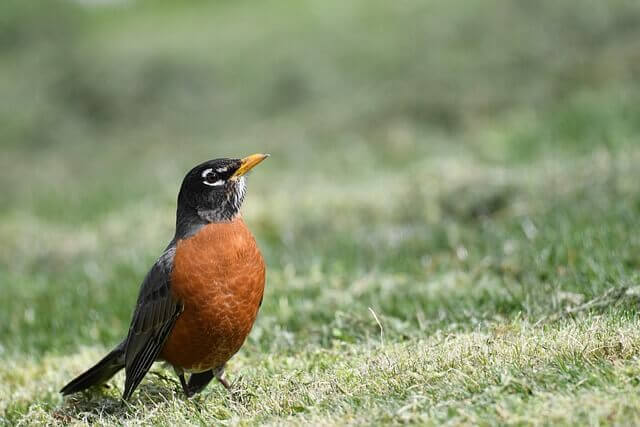
The American Robin, a ubiquitous bird across North America, showcases its omnivorous nature by incorporating both plant and animal matter into its diet. This versatile diet includes a wide array of insects, ranging from ants, spiders, beetles, grasshoppers, and termites to crickets and worms. Furthermore, American Robins don’t stop at insects; they readily consume small reptiles and amphibians, including frogs and toads.
Northern Cardinal
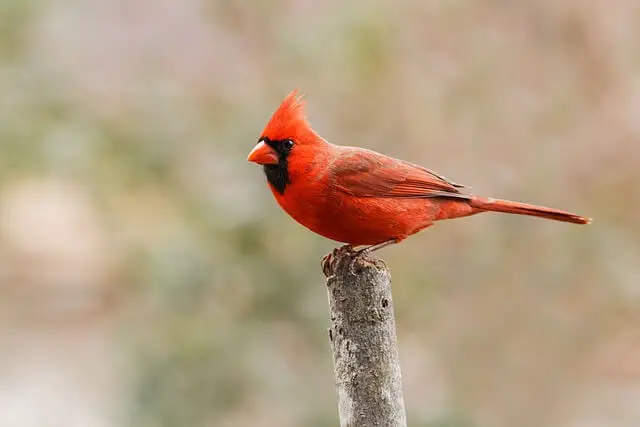
Northern Cardinals are a type of bird that is found in North America. They usually eat seeds, berries, and insects like ants during breeding season. Ants are rich in protein and fat, which can help sustain them through long periods of reproduction, as well as provide more energy for mating displays or territorial defense. Birds that consume ants typically do so opportunistically when they find them by hunting around tree trunks or near ant nests.
White-breasted Nuthatch
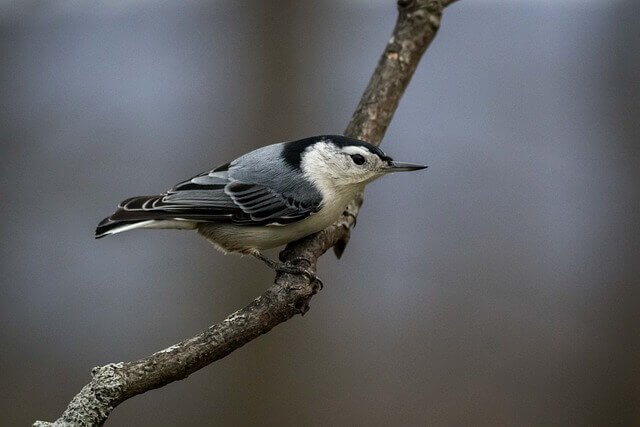
The White-breasted Nuthatch is a common bird that inhabits North America. They are most commonly found in the boreal forests of Canada and Alaska, where they live year round. They mainly eat insects and spiders during summer months but will modify their diet with seeds during winter. One way they find these ants is by looking for the straight trails on trees or logs which indicate an ant colony below it. Once they have found this trail, they can simply pluck them out.
Red-breasted Nuthatch
Red-breasted Nuthatches are small birds that live in North America. They can be found throughout most of the continent and nest in tree cavities, crevices, and sometimes even holes in buildings. Red-breasted Nuthatches mainly eat insects during summer months such as beetles, ants, flies, moths, caterpillars, wasps. In wintertime, they will also eat seeds from berries or nuts from trees. Nuthatches build nests by tunneling into tree trunks or branches of evergreen trees.
Black-capped Chickadee
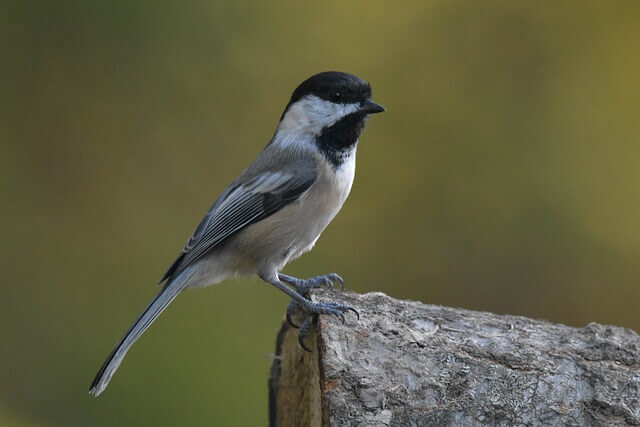
Black-capped Chickadees are one of the most common birds in North America. They range from the northern reaches of Canada to South Carolina and Florida, but they prefer more temperate climates than extreme southern states. The Black-capped Chickadee is found in areas with dense deciduous or mixed forest habitats, although it may be seen on urban street trees. Their diet consists mainly of insects such as caterpillars, ants, spiders, weevils, lice, sawflies, and beetles; their favorite foods include sunflower seeds, suet, peanuts, and some fruit.
Eastern Bluebird
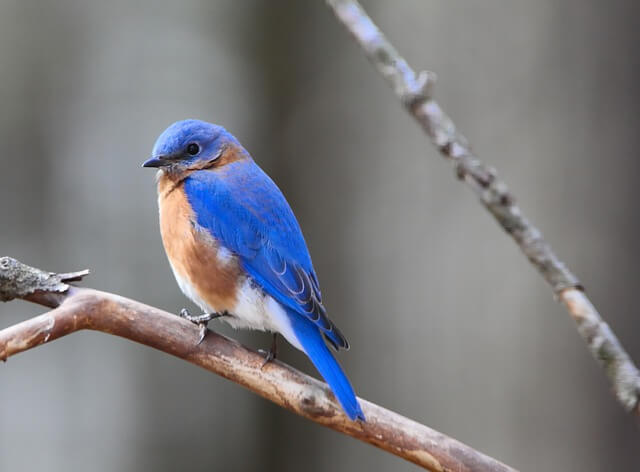
Eastern Bluebirds are found throughout the Eastern United States and most of Canada. They primarily live in woodlands, but can also be found in parks, gardens and suburban areas. Eastern bluebirds eat a variety of foods such as insects such as ants, spiders, berries and seeds. The range for Eastern Bluebirds is wide-reaching across the east coast from Maine to Florida, with small populations that can be found on occasion into South Carolina or Tennessee.
What Types of Ants do Birds Eat?
Birds primarily feast on a variety of ant species, including black carpenter ants, fire ants, and flying ants. These insects serve as a rich source of protein, especially during their seasonal swarming periods. Species like woodpeckers, mockingbirds, and swallows are known to relish ants as part of their diverse diets, showcasing the adaptability of avian predators in utilizing different ant species as a food source.
Black Carpenter Ants: A Protein-Rich Delicacy for Birds
Black Carpenter Ants (Camponotus pennsylvanicus) are a sought-after prey for various bird species. These large ants provide a protein-packed meal for birds like woodpeckers, flickers, and nuthatches. Their abundance and slow movement make them an easy target for skilled insectivores.
Birds adept at extracting them from tree bark or soil relish the nutritional bounty that black carpenter ants offer. Their presence is not just a delicacy; it’s a testament to the adaptability of avian predators in seeking out diverse food sources.
Fire Ants: A Spicy Challenge for Brave Bird Predators
Fire ants (Solenopsis spp.) may pack a fiery punch, but some avian species are up to the challenge. Birds like the Purple Martin, Northern Mockingbird and Eastern Bluebird have been observed feasting on these invasive ants.
While the stings of fire ants can be painful, these birds have developed strategies to remove the venomous sting before consumption.
Their resilience showcases the adaptability of birds in utilizing available food sources, even when they come with a bit of heat.
Flying Ants: A Seasonal Avian Delight in Aerial Form
When swarms of flying ants emerge during nuptial flights, it’s a seasonal bonanza for many bird species. These airborne ants, often winged reproductives, provide a concentrated source of nutrition. Birds like swallows, swifts, and flycatchers eagerly take to the sky to capture these elusive and fleeting delicacies.
The synchronized emergence of flying ants is a testament to nature’s intricate timing, where birds capitalize on this aerial buffet to fuel their journeys and sustain themselves during these special moments.
Army Ants: A Swarm-Hunting Strategy for Avian Gourmets
Some bird species do eat army ants. Army ants are known for their aggressive hunting behavior, forming large swarms that move through the environment, flushing out insects and other prey.
These birds have specialized foraging techniques and may include army ants as a significant part of their diet. So, army ants can indeed be on the menu for some bird species, particularly in regions where army ants are prevalent.
How Do Birds Catch Ants?
Birds employ various strategies to catch ants. Ground-foraging species, like sparrows and thrushes, peck at ants as they forage on the ground or within leaf litter. Some birds, like woodpeckers and nuthatches, glean ants from tree bark and branches.
Aerial insectivores such as swallows and swifts catch flying ants mid-air during their seasonal flights. Birds often use their specialized beaks and nimble tongues to extract ants from crevices, and they may also consume ants along with other insects while probing for food.
Despite ants’ formidable defenses like stings or bites, many birds have adapted ways to neutralize these defenses before consuming them, making ants a valuable and protein-rich component of their diets.
Are Ants Harmful to Birds?
Ants can be both a valuable food source and a potential nuisance for birds. While many bird species rely on ants as a protein-rich part of their diets, certain ant species, like invasive fire ants, can pose challenges due to their painful stings.
However, birds have evolved strategies to deal with such ants, removing their stings before consumption. Overall, ants play a complex role in the avian world, offering nutrition while occasionally presenting hazards, highlighting the intricate relationships between birds and their prey.
Do Ants Eat Dead Birds?
Yes, ants are known to scavenge and feed on dead birds. When a bird dies and its body is not promptly removed or consumed by larger scavengers, ants, along with other decomposers, play a role in breaking down the carcass. They help recycle organic matter back into the ecosystem. Ants are attracted to the protein and nutrients present in the bird’s remains, making them an essential part of nature’s cleanup crew.
What Ant Killer is Safe for Birds?
For bird-safe ant control, it’s best to avoid chemical pesticides that may harm both ants and birds. Instead, opt for non-toxic methods:
- Natural Barriers: Create physical barriers to prevent ants from reaching bird feeders or nesting areas. Use ant moats or sticky barriers to keep ants away.
- Food Storage: Store birdseed and pet food in airtight containers to deter ants from accessing these food sources.
- Cleaning: Keep feeding areas clean and remove spilled food promptly to discourage ant activity.
- Diatomaceous Earth: Consider using food-grade diatomaceous earth, a natural substance, as a safe ant deterrent. Sprinkle it in problem areas.
- Vinegar: A mixture of white vinegar and water can help deter ants. Spray it around bird feeders and nesting areas.
- Ant Bait Stations: If necessary, use ant bait stations designed to target ants without harming birds. Place them away from bird feeding areas.
- Consult a Professional: If ant infestations are severe, consult a pest control professional who can offer safe, bird-friendly solutions.
Remember, it’s essential to prioritize bird safety when addressing ant issues to ensure the well-being of your feathered friends.
Do Baby Birds Eat Ants?
Yes, baby birds do eat ants. Ants are often a valuable source of protein for young birds. Parent birds may feed their chicks ants along with other insects as part of their diet to ensure they receive essential nutrients for growth and development. The high protein content of ants makes them a nutritious choice for baby birds during their early stages of life.
Do Chickens Eat Ants?
Yes, chickens do eat ants. Chickens are omnivorous birds with a diverse diet, and ants can be a part of it. They peck at ants when they come across them while foraging for food in grassy areas or soil. Ants provide chickens with protein, making them a valuable addition to their diet. However, ants are usually just one of many insects that chickens consume as they scratch and peck for food.
Do House Sparrows Eat Ants?
Yes, House Sparrows do occasionally eat ants as part of their diet. While they primarily feed on seeds and grains, House Sparrows are opportunistic foragers and may consume ants and other insects when they encounter them. Their diet can vary depending on food availability and their nutritional needs at different times of the year. Ants can serve as a source of protein for House Sparrows, particularly during the breeding season when they require additional nutrients for their growing chicks.
Do Chickadees Eat Ants
Yes, Chickadees do eat ants. While these small, energetic birds are primarily insectivores, their diet is diverse, and it includes ants as part of their menu. Chickadees often forage for ants on tree trunks and branches, using their quick and agile movements to capture these tiny insects. Ants provide Chickadees with essential protein and nutrients, making them a valuable food source, especially during the breeding season when protein-rich food is crucial for raising their young.
What Birds Eat Fire Ants?
Several bird species are known to consume fire ants, despite their painful stings. These birds have developed strategies to deal with the venomous ants. Some examples of birds that eat fire ants include the Northern Mockingbird, Eastern Bluebird, and Loggerhead Shrike. These avian predators showcase adaptability in their diets, utilizing available food sources, even when they come with a bit of heat.
Do Black Birds Eat Ants?
Blackbirds, are omnivorous birds that consume a wide range of food, including insects such as ants. Ants provide a valuable source of protein, especially during the breeding season when birds require additional nutrients for raising their young. These birds use their keen foraging skills to locate and capture ants, showcasing their adaptability in utilizing different food sources.
Do Blue Jays Eat Ants?
Yes, Blue Jays do eat ants. While they are omnivorous and have a diverse diet, Blue Jays are known to include ants in their menu. These birds are opportunistic feeders and will consume a variety of insects, including ants, to supplement their diet. The protein-rich content of ants can be particularly valuable for Blue Jays, especially during the breeding season when they need additional energy for raising their young.
Do Robins Eat Ants?
Yes, Robins do eat ants. Ants are a part of the American Robin’s diet, especially during the breeding season. Robins are known for their versatile diets, and they often forage for ants along with other insects, earthworms, and fruits. Ants provide a valuable source of protein, contributing to the nutritional needs of these birds, particularly when raising their young.
How to Attract Ant-Eating Birds?
To attract ant-eating birds to your garden or yard, consider these steps:
- Provide a Diverse Habitat: Create a bird-friendly environment with a mix of trees, shrubs, and open areas. Different bird species prefer various habitats.
- Native Plants: Plant native vegetation that attracts ants and other insects, as well as the birds that feed on them.
- Water Source: Maintain a clean and reliable water source, such as a birdbath, for drinking and bathing.
- Avoid Pesticides: Minimize or eliminate pesticide use to preserve ant populations, a crucial food source for ant-eating birds.
- Selective Pruning: Prune trees and shrubs strategically to create nesting sites and make it easier for birds to forage.
- Bird Feeders: Offer bird feeders with insects and mealworms to supplement their diet, especially during winter.
- Ant Mounds: Allow ant mounds to thrive in your yard, as they provide a natural source of ants for birds.
- Patience: Attracting ant-eating birds may take time, so be patient and consistent in your efforts.
By following these guidelines, you can create an inviting habitat that appeals to ant-eating birds, contributing to the biodiversity and vibrancy of your outdoor space.

